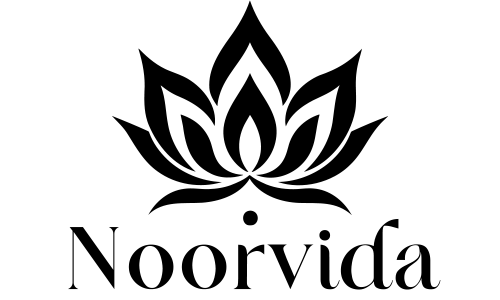Ceramic mugs are a common kitchen item used for drinking coffee, tea, and other hot beverages. However, many people wonder if they can safely microwave their ceramic mugs. The answer is not a simple yes or no, as it depends on the specific mug and its composition.
When considering whether a ceramic mug is safe to microwave, there are a few factors to keep in mind. The first is the presence of any metal on the mug, such as a metal rim or decoration. If a mug has any metal components, it should not be microwaved as it can cause sparks and potentially start a fire. Additionally, the glaze on the mug can impact its microwave safety. Dark glazes may contain more metal and therefore should be avoided. It is best to look for ceramic mugs that are labeled as microwave-safe to ensure they are safe to use.
Can You Microwave Ceramic Mugs?
When it comes to heating up your beverages or food in a microwave, it’s essential to know which containers are safe to use. Ceramic mugs are a popular choice for hot drinks, but can you microwave them?
Microwave-Safe Ceramic Mugs
The good news is that many ceramic mugs are safe to use in a microwave. If the mug is labeled as microwave-safe, it means that it has been tested and designed to withstand the heat and pressure of a microwave. You can safely heat up your beverages or food without worrying about the mug breaking or causing any damage to the microwave.
However, it’s important to note that not all ceramic mugs are microwave-safe. Some ceramic mugs may have a glaze or coating that contains metallic elements, which can cause the mug to heat up quickly and potentially create a hazardous situation.
Non-Microwave-Safe Ceramic Mugs
If your ceramic mug is not labeled as microwave-safe, it’s best to avoid using it in the microwave. Non-microwave-safe ceramic mugs may crack, break, or even explode when exposed to the high heat of a microwave. This can cause potential risks such as burns, food or liquid spills, and damage to the microwave.
To determine if a ceramic mug is microwave-safe or not, look for a label or check with the manufacturer. If there is no label or information available, it’s best to err on the side of caution and avoid using it in the microwave.
In summary, ceramic mugs can be safe to use in the microwave as long as they are labeled as microwave-safe or do not contain metallic elements. It’s important to always check the label or manufacturer’s instructions before using a ceramic mug in the microwave to avoid potential hazards.
Understanding Ceramic Materials
Types of Ceramic Materials
Ceramic materials have been used for thousands of years for various applications, including pottery, construction, and engineering. While there are many types of ceramic materials, the most common ones used for making ceramic mugs are porcelain, earthenware, and stoneware.
Porcelain is a type of ceramic material that is made by firing a mixture of kaolin, feldspar, and quartz at high temperatures. It is known for its durability and translucency, making it a popular choice for fine china and decorative objects.
Earthenware is a type of ceramic material that is made by firing clay at relatively low temperatures. It is known for its porous nature and is often used for making pottery and decorative objects.
Stoneware is a type of ceramic material that is fired at high temperatures, making it stronger and less porous than earthenware. It is often used for making dinnerware and other functional objects.
Properties of Ceramic Materials
Ceramic materials have unique properties that make them ideal for certain applications. For example, ceramic materials are often used for making mugs because they are heat-resistant, durable, and easy to clean. However, not all ceramic materials are created equal, and some may not be suitable for use in the microwave.
Glazed ceramics, for example, are not safe to put in the microwave because the glaze can crack or chip, which could lead to leaching of heavy metals like lead, uranium, and radionuclides. Additionally, dark-colored glazes may contain higher levels of manganese, which could cause the mug to get hotter in the microwave.
When choosing a ceramic mug that you want to be able to use in the microwave, it is important to consider the thickness of the material, as well as its absorption rate and weight in water. Thicker, heavier mugs may be more durable, but they may also take longer to heat up in the microwave. Additionally, mugs made from materials that absorb a lot of water, like earthenware, may not be suitable for use in the microwave.
In summary, ceramic materials have unique properties that make them ideal for certain applications, including making mugs. However, it is important to choose the right type of ceramic material and to be aware of any potential risks associated with using ceramics in the microwave.
Microwaving Ceramic Mugs
Microwaving ceramic mugs is a convenient way to heat up your coffee or tea. However, it is important to know whether your ceramic mug is microwave-safe or not. In this section, we will discuss the microwave cooking process, microwave-safe labeling, and precautions when microwaving ceramic mugs.
The Microwave Cooking Process
When you microwave a ceramic mug, the microwaves penetrate the food or liquid inside the mug and excite the water molecules, which creates heat and cooks the food or liquid. However, if the ceramic mug is not microwave-safe, the microwaves can cause the mug to crack, shatter, or even explode. This is because some ceramic mugs contain chemicals or decorations, such as gold, that can react with the microwaves and cause the mug to overheat.
Microwave-Safe Labeling
To ensure that your ceramic mug is microwave-safe, look for a label on the bottom or back of the mug that says “microwave-safe,” “heatproof,” or “safe to use in the microwave.” If you cannot find a label, it is best to assume that the mug is not microwave-safe. Not all ceramic products that are microwave-safe are labeled as such, so it is important to use caution when microwaving any type of ceramic cookware.
Precautions When Microwaving Ceramic Mugs
When microwaving ceramic mugs, it is important to take some precautions to prevent the mug from cracking or shattering. Here are some tips to keep in mind:
- Check the mug for any chips, cracks, or other damage before microwaving.
- Do not microwave handmade ceramics or terracotta, as they are more likely to crack or shatter.
- Do not microwave dark glazes or decorations, as they can overheat and cause the mug to crack or shatter.
- Do not microwave mugs with metal accents, such as a gold-plated handle or print, as the metal can spark and cause a fire.
- Do not microwave mugs that are too thin or too thick, as they can overheat and cause the mug to crack or shatter.
In conclusion, microwaving ceramic mugs can be a convenient way to heat up your coffee or tea, but it is important to make sure that your mug is microwave-safe and to take precautions to prevent the mug from cracking or shattering. Always check the label or look for any damage before microwaving your ceramic mug.
Potential Risks of Microwaving Ceramic Mugs
When it comes to microwaving ceramic mugs, there are potential risks that one should be aware of. This section will discuss two of the most common risks associated with microwaving ceramic mugs: shattering and explosion, and radiation and hazardous materials.
Shattering and Explosion
Microwaving ceramic mugs can cause them to shatter or explode. This is because the heat generated by the microwave can create uneven heating, leading to thermal stress. If the stress is too great, the mug can crack or break, causing hot liquids to spill and potentially causing injury.
Additionally, if the mug has any cracks or chips, it is more likely to shatter or explode in the microwave. This is because the cracks or chips can act as weak points, allowing the thermal stress to build up more easily.
Radiation and Hazardous Materials
Another potential risk of microwaving ceramic mugs is exposure to radiation and hazardous materials. Some ceramic mugs may contain lead in the glaze, uranium and other radionuclides, or metallic paint. When these materials are heated in the microwave, they can release harmful chemicals and radiation into the air and food.
Furthermore, if the ceramic mug is not labeled as microwave-safe, it may contain plastic or other materials that can release hazardous chemicals when heated. Plastic containers, in particular, can release harmful chemicals such as BPA when heated in the microwave.
It is also worth noting that pre-1960s mugs may contain steel or other metals that can cause arcing or sparking in the microwave, leading to a fire hazard.
To avoid these risks, it is important to only use ceramic mugs that are labeled as microwave-safe. These mugs are designed to withstand the heat generated by the microwave and are less likely to shatter or release harmful chemicals. It is also important to inspect the mug for any cracks or chips before microwaving, and to avoid using pre-1960s mugs or mugs with metallic paint or decorations.

